Of all of the possible snakes that you could keep as pets, corn snakes are among the most popular — right up there with ball pythons and boa constrictors. Corn snakes are very popular pets due to the fact that they have a great temperament, don’t grow to be too big, and are relatively easy to care for. While most people know corn snakes exist, many aren’t aware that hundreds of different corn snakes exist due to something called morphs.
What exactly is a corn snake morph? A morph is a genetic mutation of a corn snake that works to alter its appearance but keep everything else about it the same. There are hundreds of different kinds of morphs and combinations of morphs that create a very diverse array of corn snakes in existence today.
This post highlights 27 of the most popular corn snake morphs that you’ll come across when looking for a new snake to add to your collection. However, it should be noted that there are many different morphs out there with new morphs getting discovered frequently. These new morphs in turn help to create even more corn snake morphs.
Table of Contents
What Is A Corn Snake Morph?
A corn snake morph is a corn snake that has a different physical appearance in terms of its coloration and pattern from the appearance of a standard corn snake. Note that morphs are entirely different from birth defects, and this distinction will be clarified further into this post.
The full scientific explanation between morphs is quite complex, so it won’t be extensively detailed within this post. However, the existence of mutations can be used to explain the existence of morphs. All living creatures are made of something called DNA, which is essentially the blueprint for how an organism grows and develops throughout their lives.
If just a single DNA sequence mutates, quite a few different things can occur in the corn snake. Some mutations promote the production of certain proteins, while others inhibit protein production altogether. This then results in corn snake morphs, as their physical appearance is fundamentally altered through these mutations. This is, in short, how so many different kinds of corn snakes are able to exist.
When these genetic mutations make their way into the sex cells of the parents, they can be passed down into the children and carry on indefinitely. Some of these mutations are dominant, and others are recessive — so there’s some recognizable patterns and characteristics that occur. Breeders are able to utilize these mutations to create very impressive-looking corn snakes.
So, corn snake morphs aren’t genetically inferior snakes or entirely different species — they just look different!
What Are The Different Corn Snake Morphs?
As of now, there are dozens of different corn snake morphs with thousands of different combinations between them. While we wish we could highlight every single morph, this post is only going to list out 27 of the most popular morphs.
Note that the prices listed in this chart are merely estimates. We calculated these prices by looking at the sale prices of corn snakes that possess these genes and have as few other genes as possible, whether they’re showing or not. Therefore, it’s possible that you may find corn snakes of these morphs selling for more or less amounts of money.
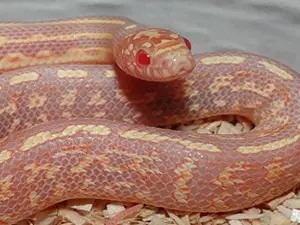
Amelanistic Corn Snake
The albino mutation. This results in a corn snake that has a color that ranges from cream to light orange. It also has orange-red saddles and usually features red eyes.
Price
$40 – $50
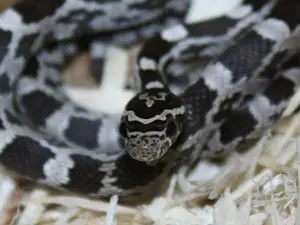
Anerythristic Corn Snake
These corn snakes lack erythrin, which is the pigment that gives corn snakes red colorations. Therefore, these snakes keep their darker grey and black colors while lacking reds and oranges.
Price
$50 – $60
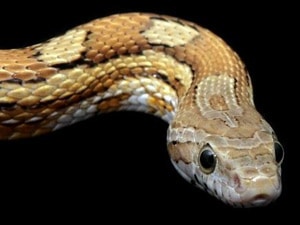
Caramel Corn Snake
Caramel corn snakes have less red pigmentation but more prominent yellows. This results in a light-tan to grey snake with saddles that are colored a deep golden brown.
Price
$30 – $70
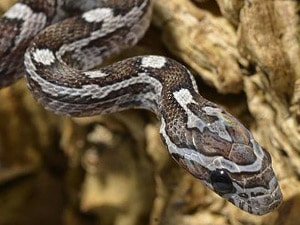
Charcoal Corn Snake
This is another anerythristic corn snake with a few key differences. There is less contrast between the base color and the markings, and those markings have very minimal brown pigmentation.
Price
$75 – $100
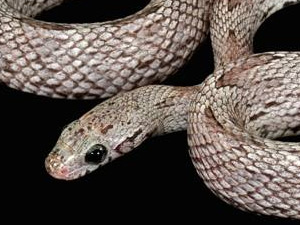
Cinder Corn Snake
Built more slim than most other morphs due to their geographic origins. These corn snakes are also similar to anerythristics, but the borders around their saddles are wavy.
Price
$50 – $60
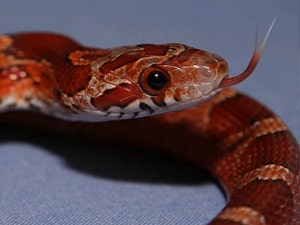
Diffused Corn Snake
A pattern morph that does just what the name suggests — diffuses the pattern on the sides of the corn snake and entirely eliminates the pattern on the belly.
Price
$50 – $100
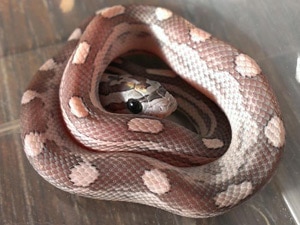
Dilute Corn Snake
A melanin-reducing gene that mutes the colors of most morphs. Due to this muted color, it gives off the appearance of a corn snake perpetually going through shed.
Price
$100 – $150
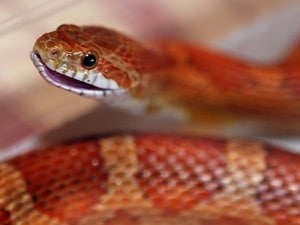
Hypo Corn Snake
This trait reduces dark pigments, making reds, oranges, and whites much more vibrant. This effect is visible in corn snakes ranging from normals to anerythristic.
Price
$60 – $100
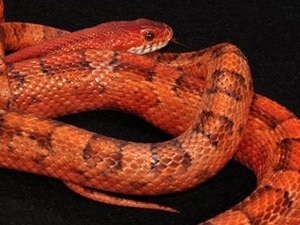
Kastanie Corn Snake
A morph that pays off as it ages. These corn snakes are born with an anerythristic appearance, but gain color as they start to grow. By maturity, they’ve taken on a chestnut color.
Price
$90 – $110
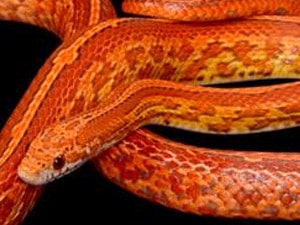
Lava Corn Snake
A more subtle corn snake morph that results in what would be black pigment taking on the appearance of a grayish-purple. Often used to add another dimension to a corn snake’s appearance.
Price
$60 – $80

Lavender Corn Snake
Lavender corn snakes are exactly as their name suggests. Their base color is a light pink, and their saddles are a darker purple-gray. Snakes with this morph have ruby or burgundy eyes.
Price
$40 – $80
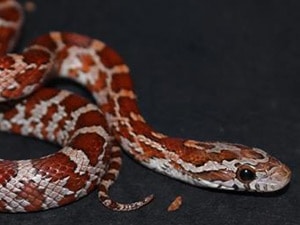
Masque Corn Snake
This morph results in a combination of grey/white head markings and a checker pattern being split down the middle to give the appearance of a lack of checkers altogether.
Price
$50 – $80
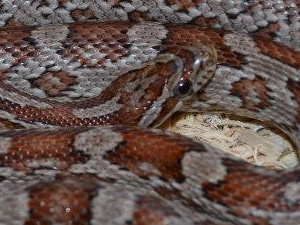
Miami Corn Snake
Smaller corn snakes that have a light-grey to silver base color and saddle markings of red and orange that are surrounded in black. Over time, the base color has lightened and markings have darkened.
Price
$50 – $70
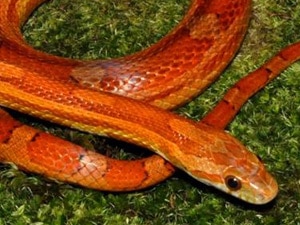
Motley Corn Snake
A pattern that results in a clear belly with an inverted marking pattern on the body. This pattern can also appear as either stripes or dashes across the body.
Price
$50 – $60
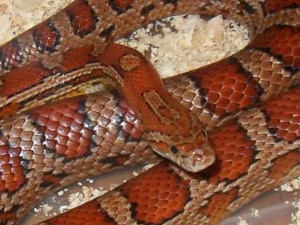
Normal Corn Snake
Normal corn snakes are the most common corn snakes and have an orange base color and red saddle markings that are surrounded in black. Their bellies are checkered black and white.
Price
$30 – $40
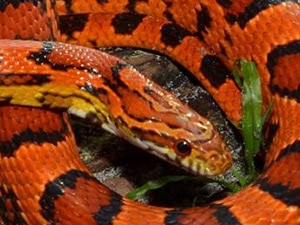
Okeetee Corn Snake
These corn snakes have a very recognizable coloration. Their base color is bright orange, and they feature deep red saddles surrounded by thick black borders.
Price
$60 – $100
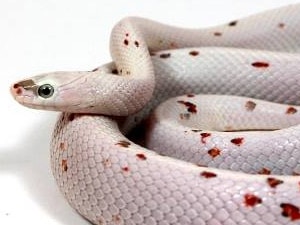
Palmetto Corn Snake
A relatively new morph that’s colored completely white and is patternless from head to tail. Some random scales are colored, though. Colors can range from black to red to yellow.
Price
$600 – $800
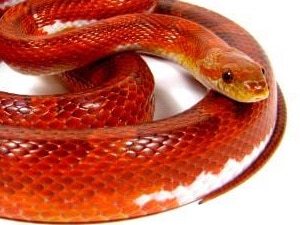
Pied Sided Corn Snake
This morph has the piebald mutation, resulting in a lack of pigmentation across certain parts of the body. This causes a white coloring to show up on the belly and up the sides of the corn snakes.
Price
$70 – $100
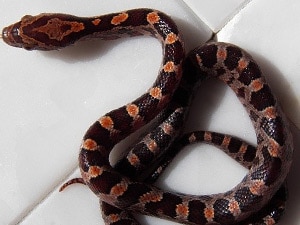
Red Factor Corn Snake
Essentially, this morph works to reduce red pigment in corn snakes. It’s also being used to potentially darken black pigment in anerythristic corn snakes.
Price
$60 – $80

Scaleless Corn Snake
This trait is not based on a unique coloration or pattern. Instead, it’s classified by a lack of scales on the dorsal region of a corn snake. Scales are still present on the ventral side.
Price
$500 – $700
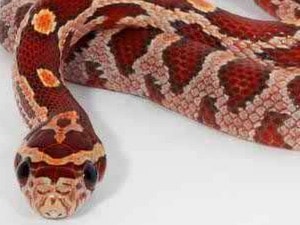
Strawberry Corn Snake
The strawberry mutation works to intensify the red pigment in corn snakes while also brightening any white that’s present. This morph looks similar to others, making it hard to recognize.
Price
$70 – $80
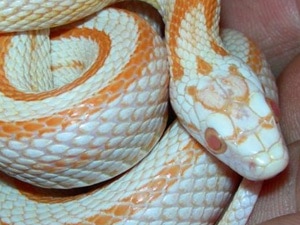
Stripe Corn Snake
This morph only affects color, so it can be seen in many different kinds of corn snakes. It results in a striped pattern that leads all the way from the head to the tail.
Price
$40 – $60
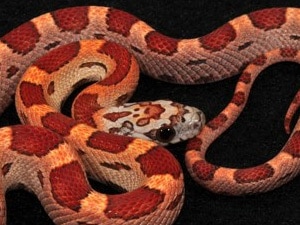
Sunkissed Corn Snake
Typically featuring more vibrant red and orange colors, this morph also results in other characteristics such as rounded saddles and unique head patterns.
Price
$60 – $80
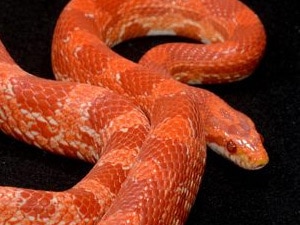
Sunrise Corn Snake
A mutation that hatches with very little red coloring. Then, as the corn snake ages, the red pigmentation gets very vibrant. Further along, the coloration becomes muted and “frosted”.
Price
$150 – $200
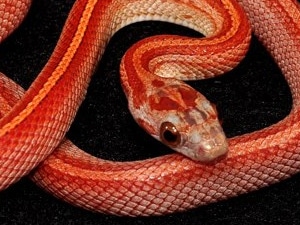
Terrazzo Corn Snake
Often taking on the appearance of a hypo corn snake with a wide stripe that disappears near the tail. Bellies have no checkers, and their eye color depends on their other genetics.
Price
$125 – $150
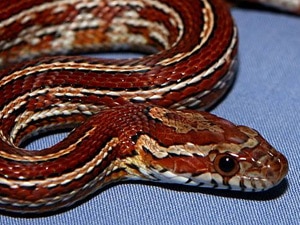
Tessera Corn Snake
One of the most varied pattern mutations in existence today. Mainly classified by the tessellation pattern on the sides. It also features a stripe leading from the head to the tail.
Price
$60 – $100
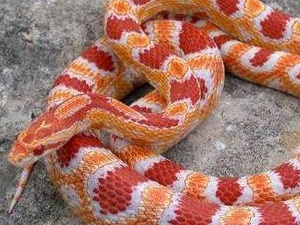
Ultra Corn Snake
Ultra corn snakes very greatly. Babies tend to have a tan ground color with saddles that are red or orange and have grey borders. As they grow, saddle borders and belly checkers turn to black.
Price
$80 – $100
Most Desired Corn Snake Morphs
While every single corn snake morph has characteristics that make them desirable to a wide array of people, there are some morphs that rise above the rest. Whether it be due to their rarity or the uniqueness of their appearance, these morphs tend to fetch a healthy amount of money whenever they’re made available. A snake may even sell for hundreds of dollars without physically displaying the gene just for the opportunity to use to to make babies.
- Palmetto Corn Snake – Palmetto corn snakes are the most obvious of the expensive corn snakes. Their high sale price is largely due to the fact that palmetto is a relatively new morph, and the coloration that it causes is extremely unique. By itself, this morph is beautiful and results in a stunningly unique corn snake. However, when combined with other morphs, it creates a corn snake that has unparalleled subtle beauty. The few colored scales of the palmetto morph can take on the characteristics of other morphs that they’re combined with, making this a very valuable morph.
- Scaleless Corn Snake – Such a unique morph is bound to fetch a high price. Scaleless corn give a much more smooth and clean appearance that looks great on its own and combined with other morphs. The possibilities for combinations with this morph are unending, meaning that they’ll easily hold their value for many more years. When a certain look can only be achieved with one morph, it’s going to be very highly-desired.
- Tessera Corn Snake – While tessera corn snakes sell for under $100 regularly, they are still one of the most highly desired morphs in existence. This is because they’re used as a breeder snake to create incredible-looking offspring. A good portion of the most expensive corn snake morphs available today all use the tessera corn snake to create a stunning, unique pattern.
Popular Morph Combinations
Morphs can be combined with other morphs to create offspring that are some kind of combination of the two. In selectively breeding corn snakes, it’s possible to produce snakes that display three different physical traits with a couple more on the back burner for their offspring.
Some morph combinations are more popular than others. In fact, there are some morph combinations that are almost seen as their own morphs! Below we’ve highlighted 7 of the most popular corn snake morph combinations so you can see for yourself what beauty is possible to create.
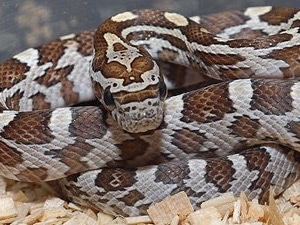
Amber Corn Snake
(Hypomelanistic + Caramel) A corn snake morph with amber-colored markings on a light brown or gray base.
Price
$90 – $110
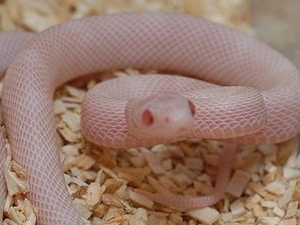
Blizzard Corn Snake
(Amelanistic + Charcoal) Totally white corn snakes with very little to no discernible pattern and bright red eyes.
Price
$150 – $200
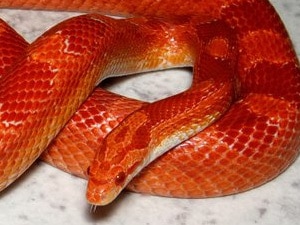
Fire Corn Snake
(Amelanistic + Diffused) An albino variant of the diffused morph. These corn snakes tend to be bright red with minimal patterns.
Price
$60 – $80
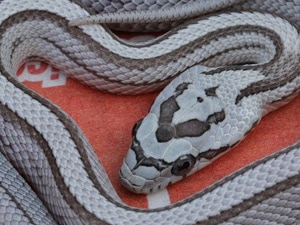
Ghost Corn Snake
(Hypomelanistic + Anerythristic) Varying grays and browns on a lighter background. Often displaying pastel lavenders, tans, oranges, and pinks.
Price
$60 – $80
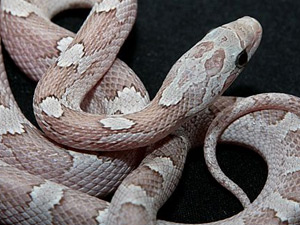
Granite Corn Snake
(Diffused + Anerythristic) Adults display a wide array of different grays with males exhibiting faint pink highlights.
Price
$70 – $100
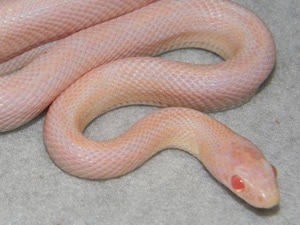
Opal Corn Snake
(Amelanistic + Lavender) Matures into a corn snake that looks very similar to a blizzard morph with pink and purple highlights.
Price
$150 – $200
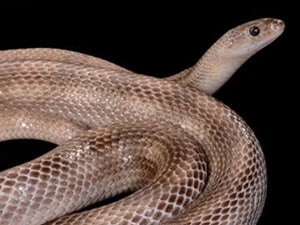
Pewter Corn Snake
(Charcoal + Diffused) A more monotone corn snake with a silver/lavender base color and very few patterns as adults.
Price
$200 – $250
Morphs Vs. Physical Defects
It was mentioned earlier that morphs and birth defects are very different things. Knowing the difference between them will allow you to tell when a corn snake’s characteristic is caused by a harmless mutation and when it’s something that could potentially pose a threat.
As stated, morphs are simply mutations in a corn snake’s DNA that cause a different physical appearance but keep their basic biology the same. With most morphs, nothing is taken away or added to the corn snake — it simply looks different from a normal corn snake. Birth defects are different from this.
When a birth defect is present in a corn snake, it results in genes that either gained or lost and entirely change the anatomy of the snake. These genes can affect the daily life of a corn snake and drastically affect its ability to go about normal tasks. Some defects can severely hinder a corn snake’s ability to stay alive, commonly causing premature death in the wild.
Defects are a factor that makes corn snake breeding quite a dangerous task if you aren’t sure what you’re doing. If two corn snakes are bred and their morphs are incompatible with each other, quite a few side effects can occur. Many times, this will produce a corn snake that will die within weeks. Defects can also occur when a pregnant corn snake is kept in an enclosure that’s too hot or cold.
Unfortunately, even if you’re a very careful and knowledgeable breeder, these defects can still occur in your snakes. While they are rare, they’re sometimes unavoidable. However, if you’re careful and take the proper precautions, you can nearly eliminate the chances of ever running into a problem like this.
Regular Vs. Morph Corn Snake Costs
Corn snake morphs tend to be worth a lot more than normal corn snakes. Back in the 1970s, corn snakes were all about the same and were sold for relatively affordable prices. Corn snakes would be sold in pet stores and by breeders for less than $50, and there was a very niche market for these reptiles. However, the development and popularization of corn snake morphs has changed the way that they’re perceived by society.
While all corn snake morphs essentially act the exact same and are cared for in the exact same way, they can vary greatly in their physical appearance. It’s this unique and beautiful appearance that adds so much value to these snakes.
Today, it isn’t difficult to find a normal, healthy corn snake for sale for around $35. However, this is as cheap as you’re going to get. Some of the more rare and sought-after corn snake morphs regularly fetch several hundred dollars. Once you start combining some of these morphs, you can get snakes that enthusiasts are willing to spend thousands of dollars on!
Such high prices aren’t extremely common, though. You’ll most frequently see morphs selling for between $100 and $500. This certainly isn’t a cheap price to pay for a snake, but it’s a lot cheaper than the most coveted corn snake morphs. Prices can also be determined by the temperament of the snake, its age, and the unique styling and coloration of the individual snake. While two corn snakes may be the same morph, they can look very different!
No matter what morph you decide to invest in, though, all corn snakes will cost roughly the same throughout their lives. These superficial physical differences don’t have any influence on how you need to care for each snake individually.

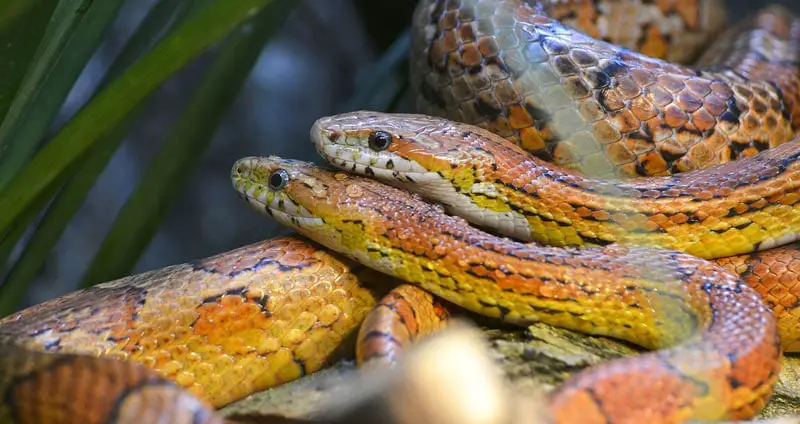
I have/had a hatchling normal corn snake, 9-11 months when I got him, he escaped in the first six weeks! I still think he was a great pet and I would recommend them to anyone. However, they are AMAZING escape artists so put that lid on tight!
Also, NEVER put anything past a baby corn snake. I fed him one night at 8:30 and when I went to check on him before bed, he was gone! He had an ENORMOUS mouse in his stomach and still climbed the glass of a 2+ ft tank to escape out a hole a small as my five-year old’s daughter’s pinky finger!
Wow! Yeah these snakes do make for great pets, but people don’t realize just how escape-prone they are! Standard ventilation holes in enclosures can be a very easy route for escape. That’s definitely something that I try to tell every owner of a baby snake (and tarantulas, too).